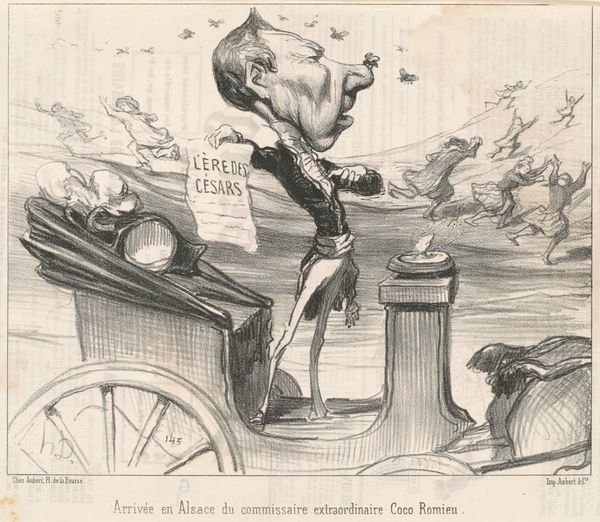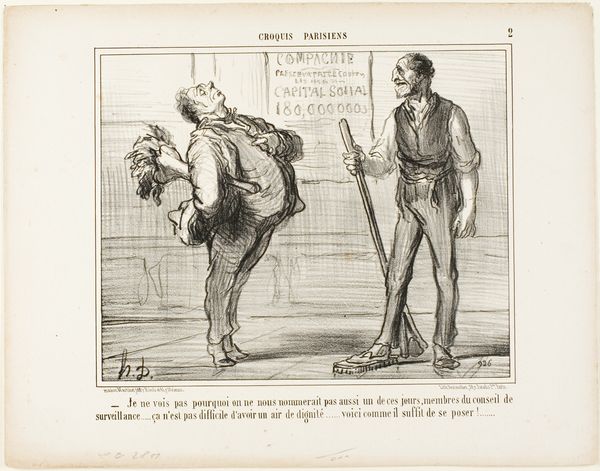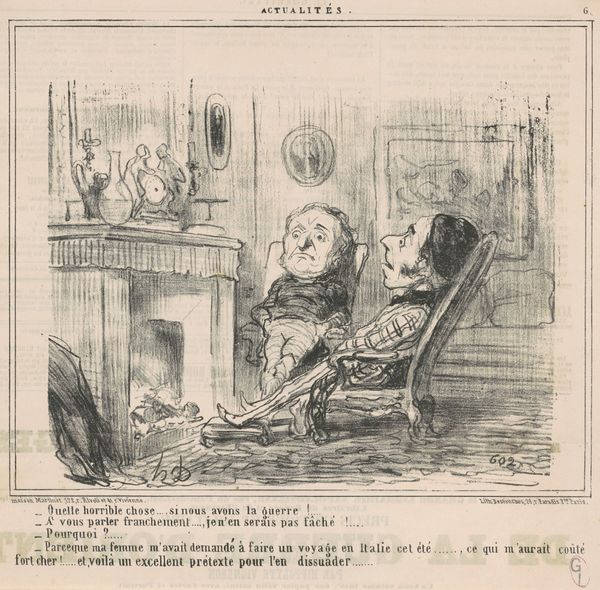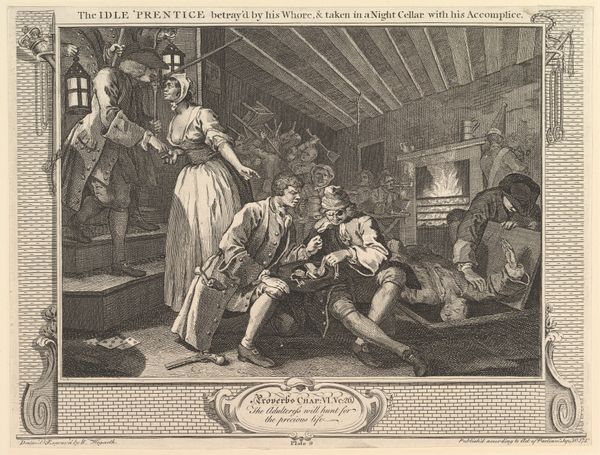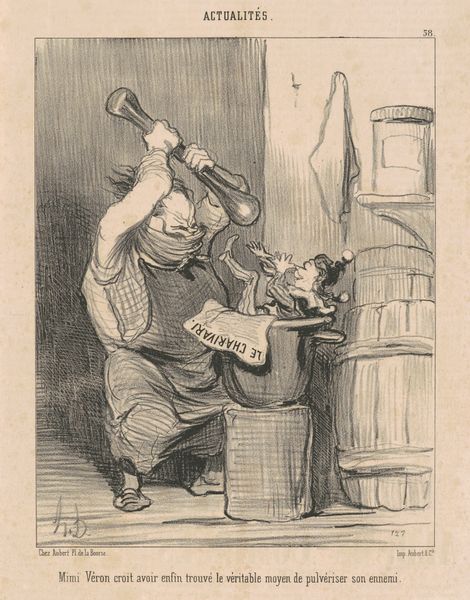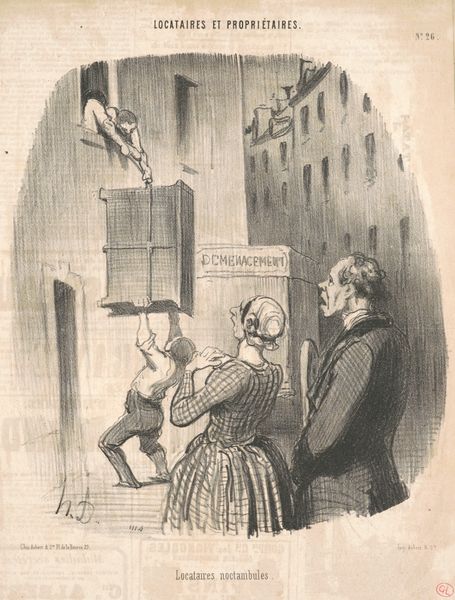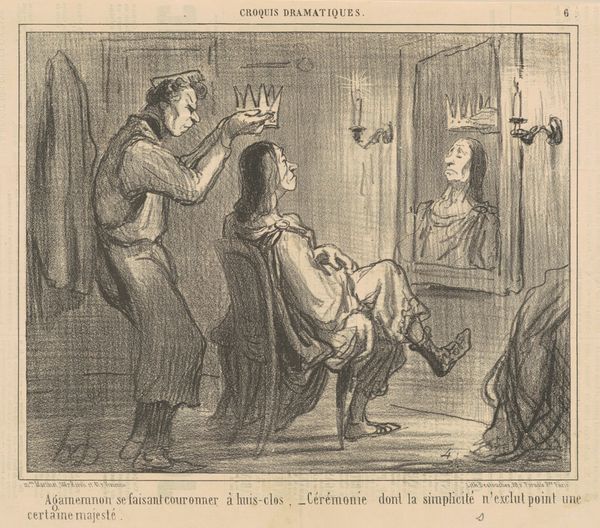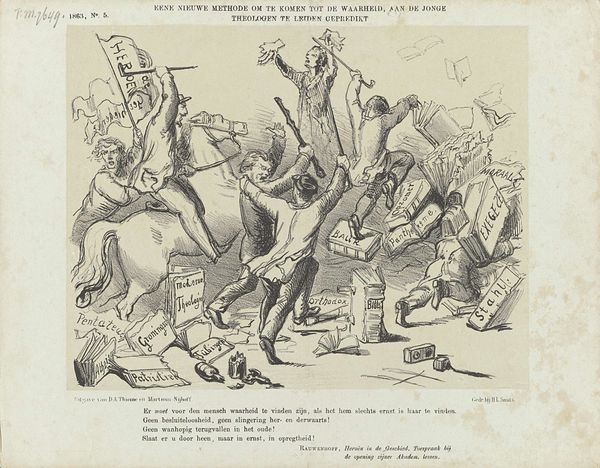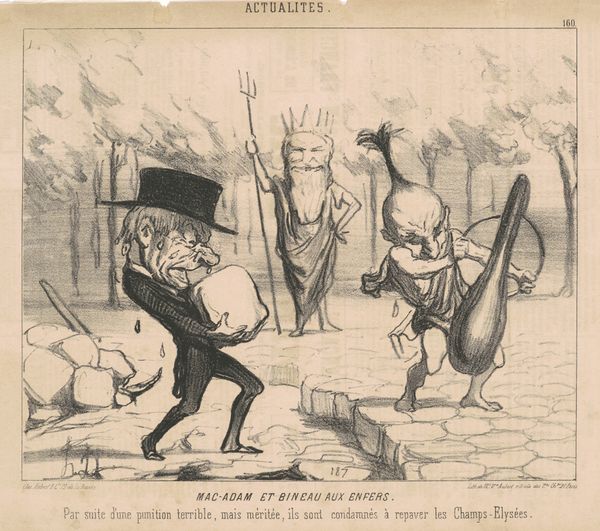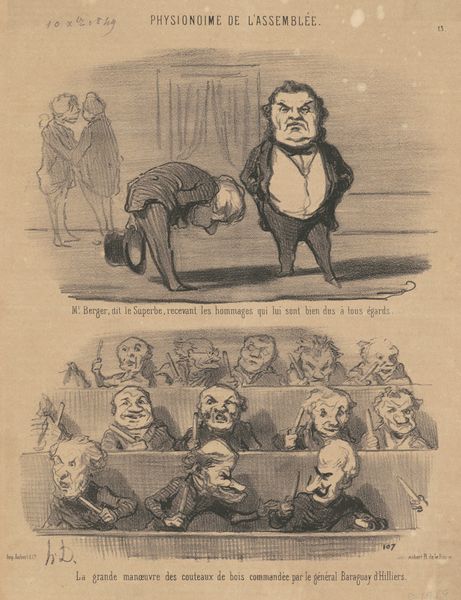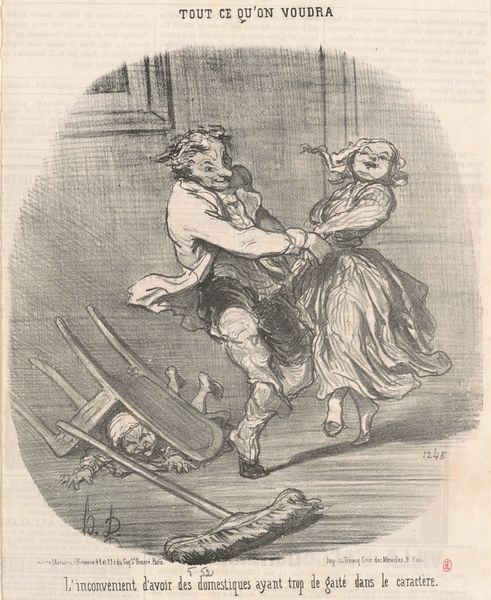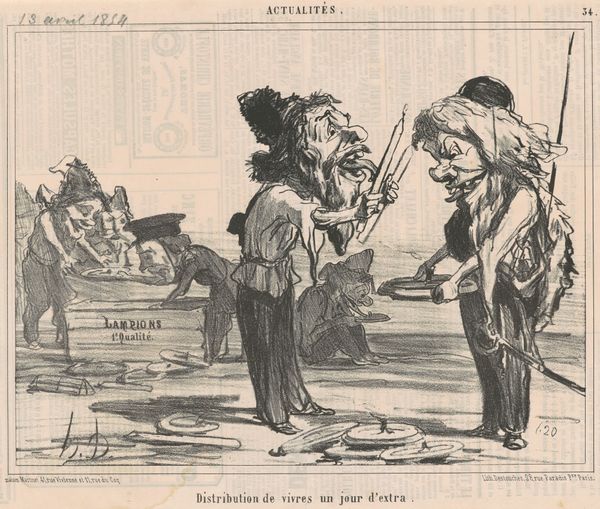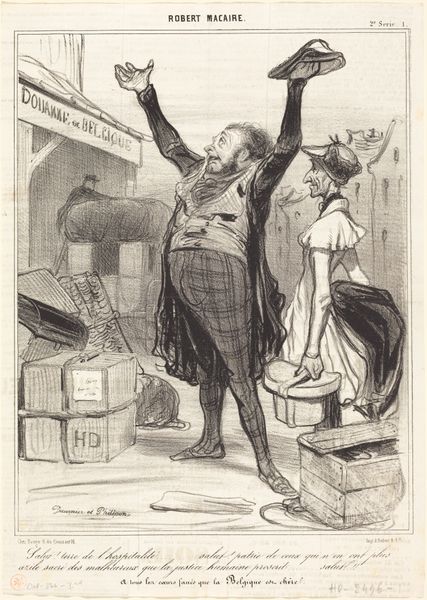
drawing, graphic-art, lithograph, print
#
drawing
#
graphic-art
#
lithograph
# print
#
caricature
#
caricature
#
history-painting
#
realism
Dimensions: 209 × 223 mm
Copyright: Public Domain
Curator: Look at this satirical lithograph, “Kelly’s Triumph,” possibly created around 1880 by James A. Wales, published in *Puck*. It captures a moment thick with political machinations. Editor: Immediately, the overwhelming visual is this imposing, almost grotesque central figure, dominating the composition. Is that supposed to be a powerful man, or is the artwork mocking the status? Curator: The print certainly leans toward caricature. John Kelly, the boss of Tammany Hall, is depicted as a kind of "Big Chief," wearing what appears to be a mishmash of Native American stereotypes and classical garb. It's rife with commentary about power, appropriation, and the political landscape of the time. Editor: Those empty chairs, labelled for Tilden and Hancock, add to the sense of abandonment and perhaps a crumbling establishment. Are those… are those letters standing, with spindly little legs? It seems absurd and humorous to show these written declines in the form of active players within this scene, almost anthropomorphic messengers, pleading with the chief figure to give him authority, yet Kelly’s demeanor feels anything but regal. Curator: Precisely. And the artist utilizes recognizable symbols. The reference to “Tammany” ties the scene explicitly to the Democratic political machine in New York. He sits amidst implied tribalistic symbols of “chiefdom” amidst seats that suggest political authority, only further underlining the irony—all this spectacle resting on emptiness. What resonates, too, is that those signatures appearing upon these tiny documents represent the various, complex layers in the history of U.S. immigration and power in nineteenth century U.S. cities. Editor: Indeed. The feathered headdress, that strange shell necklace - it's all layered symbolism meant to provoke. He seems both inflated with self-importance, but also subtly grotesque and pitiful in the center of a dark, brooding mise-en-scene. This artwork really encapsulates the fraught intersections of culture, power, and identity within a specific historical moment, inviting viewers to critically consider power dynamics. It feels as important today as it would have back then. Curator: A fascinating glimpse into the power plays of the late 19th century.
Comments
No comments
Be the first to comment and join the conversation on the ultimate creative platform.
